There are some really incredible trees native to Poland because the country has such a wide range of environments. From ancient primeval forests to mountains and vast lakes, Poland’s native trees are widespread and varied. Let’s discover nine incredible trees that are native to Poland.
Where is Poland?
The Republic of Poland is in central Europe. It’s home to 37.7 million people and covers 312,722 km2, of which 29.4% is forested.
Poland has 770 kilometers of coastline, the Carpathian mountains, and one of the world’s highest lake densities. The largest Polish forest is the Lower Silesian Wilderness and 69% of its total forests are coniferous.
Its climate is oceanic to continental with an alpine climate in the mountainous areas. This gives plenty of scope for some really interesting trees!
Let’s take a look at some incredible trees native to Poland, including some of the conifers that make up so much of its forests.
Larix polonica
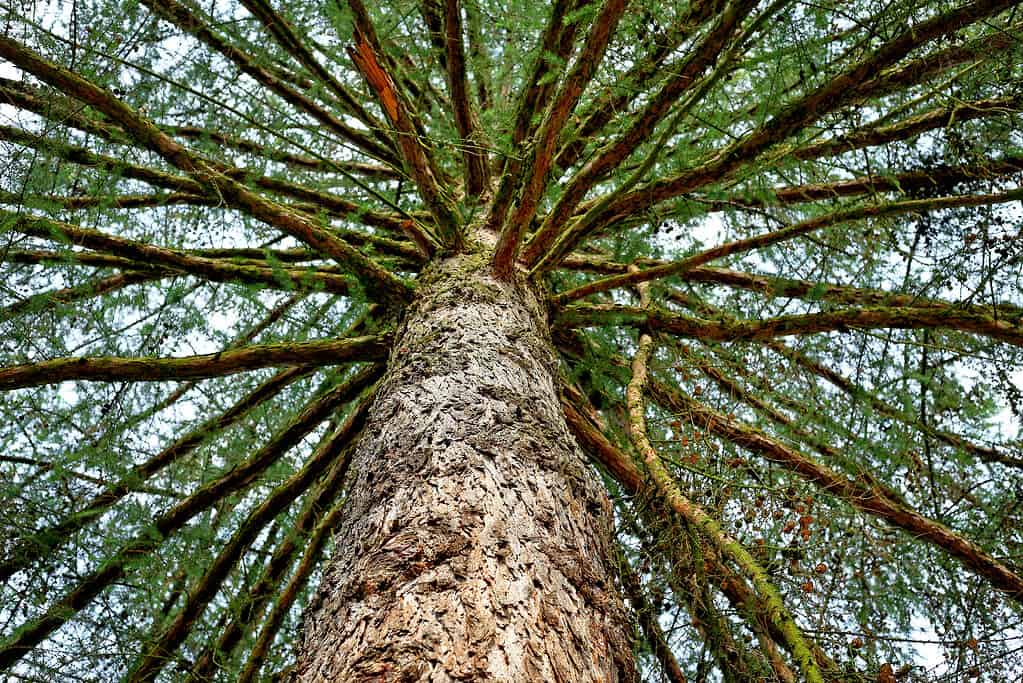
, the Polish larch, is a subspecies of the European larch.
©Wojmac/Shutterstock.com
The Polish larch is Poland’s native pine tree and was discovered in the Chelmowa Mountains.
It’s a subspecies of European larch that reaches 98 feet (30 meters) and lives for hundreds of years. Young larch have a cone shape, but as they mature, they broaden out and spread their impressive canopies. Its bark is pretty pinky-brown with deep fissures running vertically down the trunk.
Larches have light-green soft needles that reach an inch in length and turn golden yellow in fall. Because it’s a deciduous tree, the needles fall for winter before growing back in spring.
The Polish larch is a distinct subspecies. It differs because its young shoots are paler and the seed cones are smaller. Squirrels, siskins, and tortrix moths all rely on its seeds, cone scales, and foliage for food.
The Polish larch is at risk of extinction and an established Natural Reserve works to protect it.
Taxus baccata

The English yew tree is native to Europe and common in Poland.
©Peter Turner Photography/Shutterstock.com
The common yew is native to Europe and some of Poland’s oldest yews are in the Swietokrzyska Forest. Some of these yews are hundreds of years old with 16 feet (five meters) circumference trunks. However, these are youngsters compared to Poland’s oldest yew. This grandfather is 1,300 years old! You can find it at Henryków Lubański in the Lower Silesian Voivodeship.
Yew is a species of plant in the Taxaceae family. It’s an evergreen species that stretches from Britain to northwest Africa and into southwest Asia. Yew trees have been common in European churchyards, perhaps because most parts of them are deadly if eaten.
This handsome evergreen reaches 35-65 feet (10–20 meters) tall and has rough fissured bark. Its leaves are flat, dark green and arranged in a spiral on thin stems.
Quercus robar
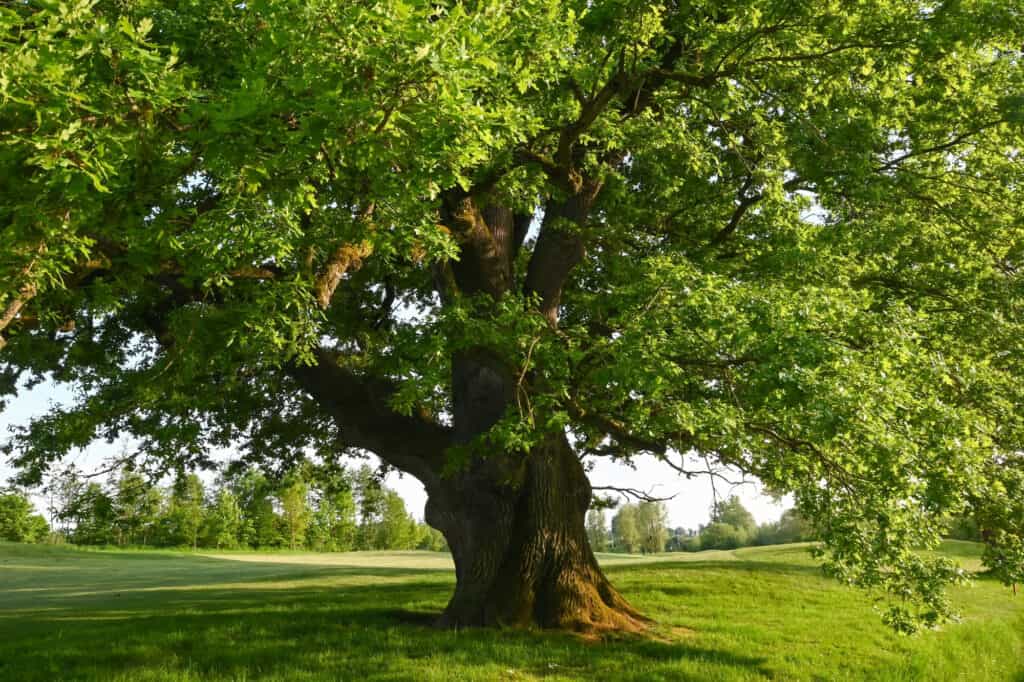
The English oak tree is what many think of when they think of oak trees.
©James d’Almeida/Shutterstock.com
The common oak is native to Europe and grows in Poland’s forested areas. The Boalowieza forest is home to many old oaks. This forest borders Belarus and is part of an ancient primeval forest.
Oaks can reach 65 – 131 feet (20-40 meters) tall and have magnificent canopies on sturdy branches. They are large deciduous trees with distinctive lobed leaves and acorns in fall. Europeans used oak to make their strongest warships. In its natural environment oaks feed numerous species including squirrels, boar, and birds.
In Poland, the Bazynski oak is 716 years old and a national monument. It’s 68 feet (21 meters) tall with a 70 feet (21.5 meter) wide crown and a 49 feet (15 meter) circumference. The oak is hollow and fits 11 people inside!
Alnus glutinosa
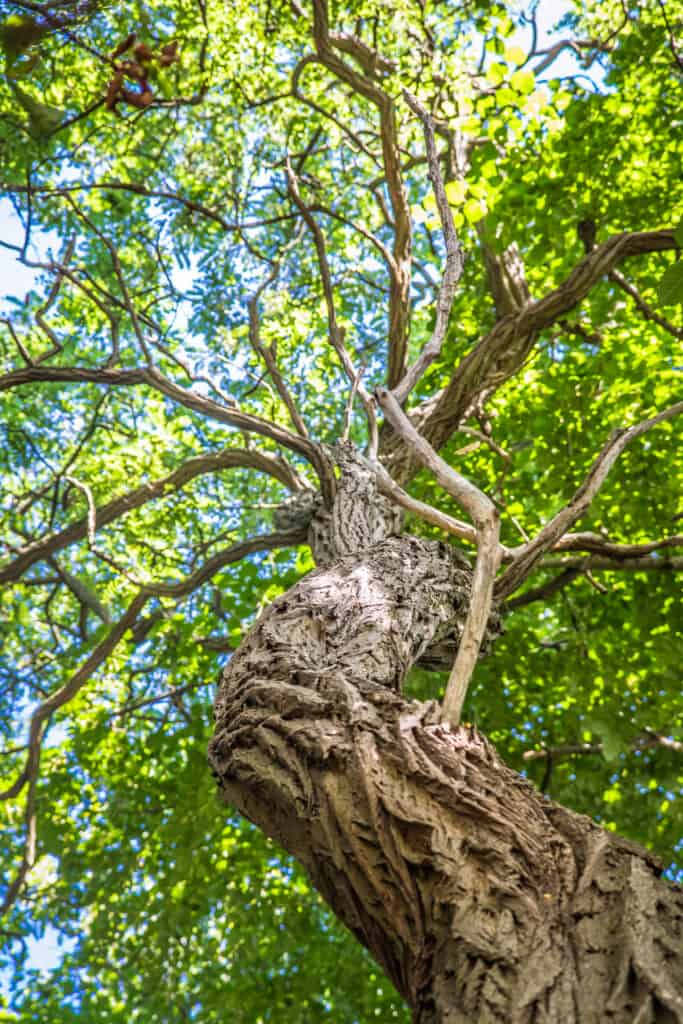
The black alder tree, or common alder tree, is native to Poland.
©Aleksandra Duda/Shutterstock.com
Native to Poland is the incredible, water-loving black alder tree.
This deciduous beauty is commonly called black alder and found in moist, swampy areas or beside river banks. Water actually makes its wood harder!
Alders are conically shaped and reach approximately 91 feet (28 meters) tall. They are fairly short-lived compared to some native Polish trees. Alders usually fall at 60 years old.
Its water-loving bark is dark brown and fissured all over. Lichen and moss are attracted to its damp loving bark and sticky twigs, but despite its tough nature, alder leaves are bright green and heart-shaped!
It produces small brown cones from female catkins that emerge in February and April.
Alder is an essential tree near watercourses because its roots help stabilize riverbanks and prevent soil wash off. It can also grow in drier conditions around the edges of forests because it uses the bacteria Frankia alni to fix nitrogen and improve its surrounding soil.
Clever alder!
Tilia cordata
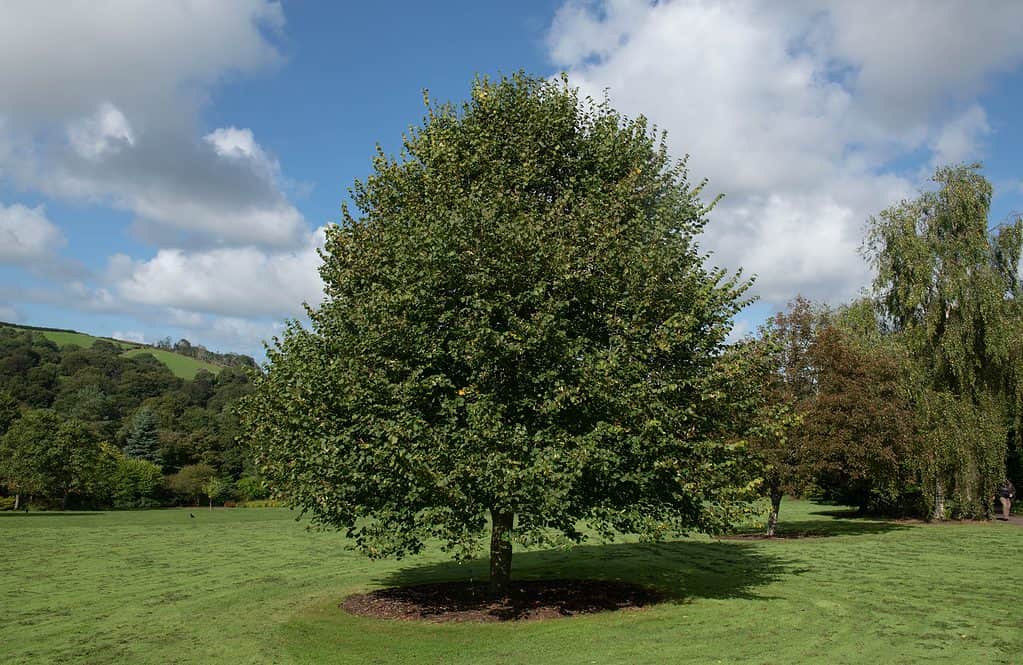
is the scientific name for small-leaved lime trees, or small-leaved linden trees.
©Peter Turner Photography/Shutterstock.com
The small-leaved lime is native to Poland and a vast swathe of Europe. It grows in old, dense forests and is tolerant of shade there. You may know it as the Linden tree.
This pretty deciduous tree is a member of the family Malvaceae and while its range is widespread, it’s not a common tree.
It can reach 66-131 feet tall (20-30 meters) with a three feet diameter trunk. The leaves are heart-shaped and yellow-green with a pointed tip. Sweetly fragranced flowers emerge in spring which are particularly loved by honey bees.
In fall, its leaves blow away leaving large winged seeds on bare branches. Eventually, these too blow away in the breeze dispersing far and wide.
The small-leaved lime has smaller leaves than lime trees as its name suggests. Young leaves are edible, and deer and wandering cattle graze them.
Betula nana
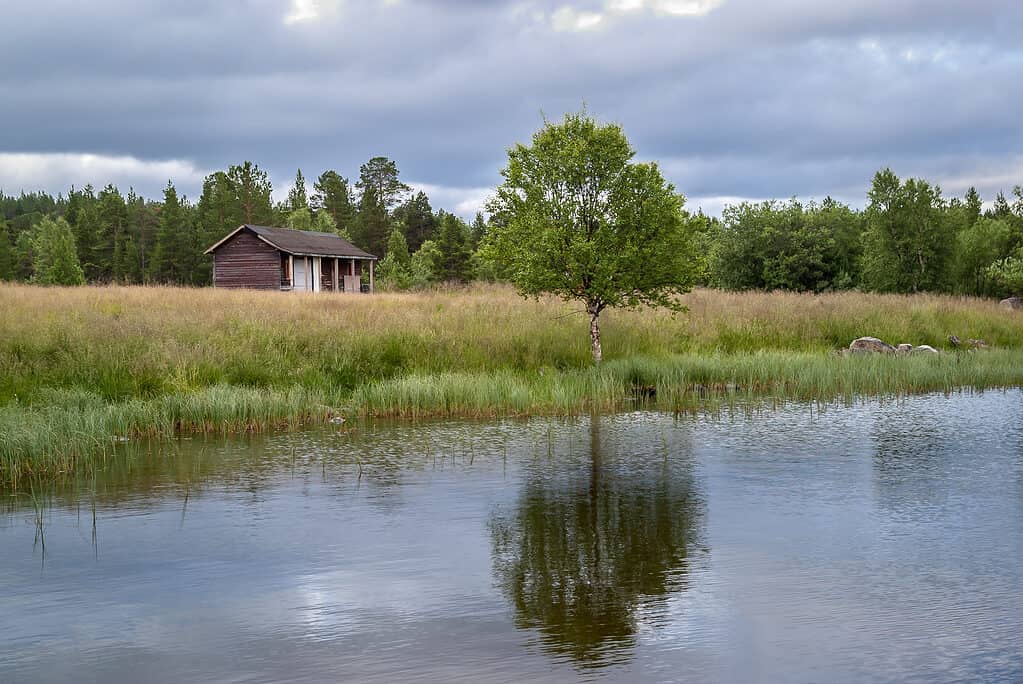
are commonly called dwarf birch trees.
©Plam Petrov/Shutterstock.com
Dwarf birch trees are members of the Betulaceae family. They love cool climates and are mostly found in arctic to cool temperate regions of central and northern Europe.
As its name implies, this is a short tree (often a bush) that reaches only three to four feet (one meter) tall. It has smooth copper-colored bark and small rounded leaves with a toothed edge. New leaves grow after the snow has melted and catkins emerge in the warmer periods. The wind pollinates its catkins.
Betula nana prefers wet but well-drained poor and acidic soil. It does not like shade and grows in the cool mountainous areas of Poland.
Pinus cembra
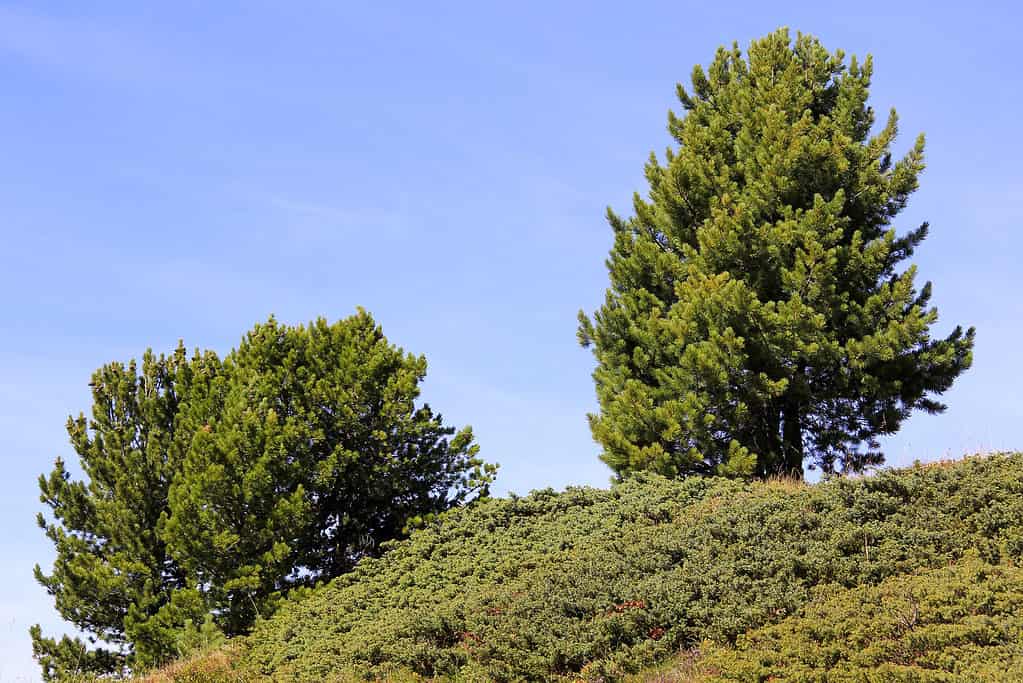
A tree of many names, the
Pinus cembraalso goes by Arolla pine and Swiss pine.
©footageclips/Shutterstock.com
Other names for the Pinus cembra are the Arolla pine and the Swiss pine. It’s part of the white pine group and native to the Alps and Carpathian mountains. In Poland, it grows in the Tatra Mountains.
It grows at elevation, often 3,900 to 7,500 feet (1,200 -2,300 meters) all the way to the alpine tree line. Its needle foliage grows in bundles and although it can reach 82 to 115 feet tall (25-35 meters) it can take several decades to even reach 3-4 feet! Its cones are small, brown, and slow to mature. Spotted nutcrackers disperse their seeds.
This is a very tough, slow-growing pine. It’s one of the more incredible trees native to Poland because it can survive minus 50 degrees and cope with mountainside wind exposure. Its roots are sturdy enough to minimize the likelihood of avalanches!
Betula pubescens var. glabrata
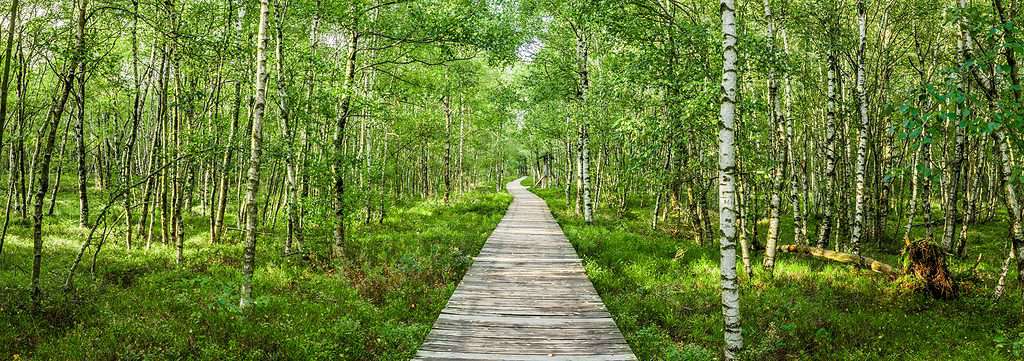
The Carpathian birch is native to Europe and Poland. Pictured is a Carpathian birch forest in Germany.
©by-studio/Shutterstock.com
This subspecies of birch is also called the Carpathian birch. It’s native to northern Europe’s Pyrenees and Carpathian Mountains.
It has a long, slender brown trunk that can reach 33 – 66 feet tall (10-20 meters) with a narrow crown half its height. Mature trees develop attractive white peeling bark that peels away like paper.
Carpathian birch grows in the cold areas of Poland and in the Carpathian mountains on damp but free-draining soil. It has deciduous ovate leaves with dented margins and tiny greeny-yellow flowers in springtime.
Its flowers mature into winged samara seeds that are dispersed over the mountains on strong breezes.
Salix lapponum
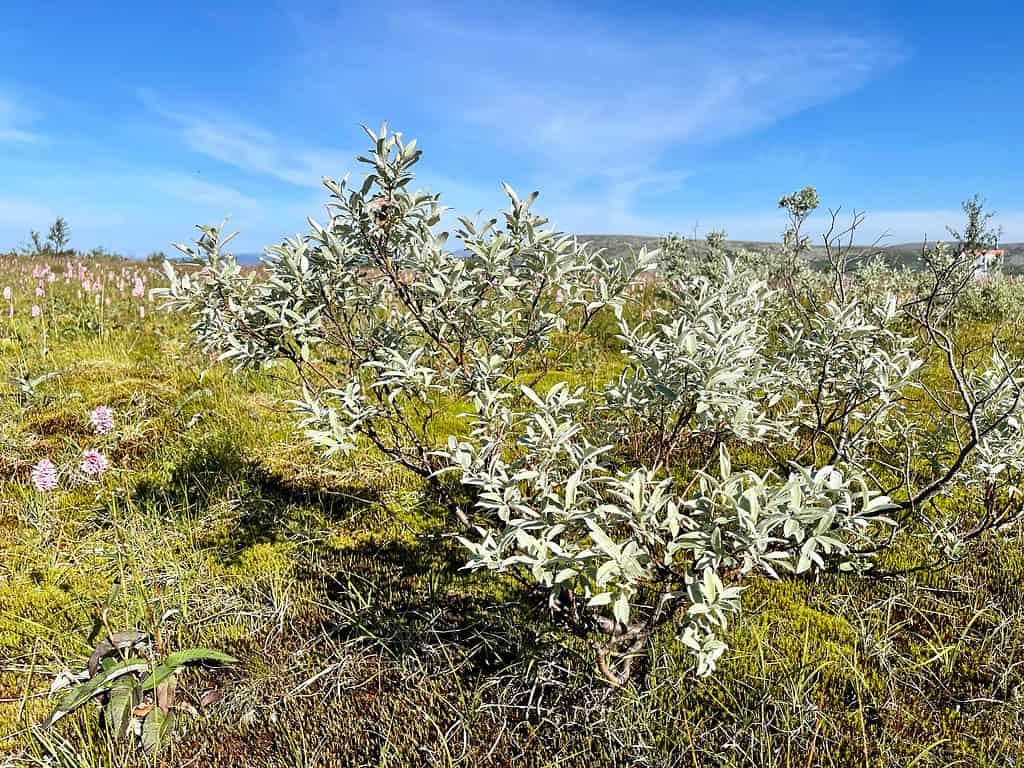
The
Salix lapponum, or downy willow, grows in the mountains of Poland.
©Ovchinnikova Irina/Shutterstock.com
This northern European shrub is also called downy willow or Lapland willow. It grows in the mountains of Poland and into Siberia on rocky slopes and cliffs.
It’s a many-branched short tree or shrub up to five feet (1.5 meters) that thrives at altitudes of 660-2,950 feet (200-900 meters). It has hairy twigs that mature to glossy red-brown and deciduous lanceolate leaves that are wrinkled and hairy on the undersides. Its green catkins emerge before new leaf growth in early spring with pretty red and yellow anthers.
Lapland willow often grows in a dense thicket near pools of water on Polish mountainsides. It creates useful cover for animals and prevents avalanches and soil erosion.
Up Next…
The photo featured at the top of this post is © Plam Petrov/Shutterstock.com
Sources
- Lasy Państwowe (State Forests of Poland), Available here: https://www.lasy.gov.pl/en/our-forests/polish-forests
- Envi Web, Available here: https://www.enviweb.cz/99368
- AvesNature, Available here: https://avesnature.com.pl/en/the-largest-and-oldest-trees-in-poland-and-in-the-world/
Thank you for reading! Have some feedback for us? Contact the AZ Animals editorial team.






